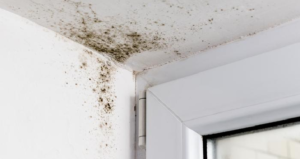Understanding Spore Trap Analyses and Results
Techno AdminIn standard1st May, 2019
With no established standards, interpretation of air sample results for mold is not always easy and requires some understanding of the limitations of these samples and the factors that could bias the spore counts you receive from a lab. The following will negatively or positively bias the total spore counts.
- Total amount of air that is collected. Most professional use pumps that draw 15L of air per minute. The total air volume for a 5 min. sample would be 75L or 0.075 m3. Ideally, 1 m3 of air should be collected but this may not be possible when sampling with cassettes such as Air-O-cell, and other similar devices if the area being sampled is dusty or highly contaminated.
- The percentage of the sample that is analyzed. For cassettes such as Air-O-Cell, the fungal fragments and other particulates are deposited in a rectangular area that is approximately 1.1mm wide by 14.5mm long. To reduce bias, at least 15% of this deposition area should be analyzed.
- Particle loading. Even with short sampling time of 5 or 10 minutes, samples often get overloaded with spores and other particulates. Such samples are very difficult to analyze since it’s hard for the analyst to keep track of what has been or has not been counted. When you receive your air sample results, it’s always good to look at the debris rating (scale of 0-5). A rating of 3 or 4 suggests negative bias. A rating of 5 means that spore counting and identification is impossible and a new sample should be collected at a shorter time interval.
- Distribution of spores in the air during sampling. Spores are not uniformly distributed in air. This means that the position and even the height of the sampler would bias the final spore counts either negatively or positively.
- Non-uniform distribution of spores on the deposition area biases the final calculation of spores per cubic meter of air. Distribution of the trapped spores on the deposition area
- The quality of microscope used for lab analysis. Use of a microscope with poor resolution not only makes it difficult to see the smaller spores such as Aspergillus/Penicillium but also tires the eyes of the analyst.
- The experience of the analyst. Inexperienced analysts are likely to count look-alike non-fungal structures as spores.
- The status of the sampling pump. If the sampling pump is not properly calibrated or the battery fails during sampling, then calculations of fungal spores per cubic meter of air would be based on incorrect air volume.
Finally, some labs claim they often analyze 100% of the spore trap samples. This is not practically possible especially when samples are overloaded with spores and other particulates. Even for samples that are not overloaded, ensuring 100% coverage of the sample deposition area would be difficult.

